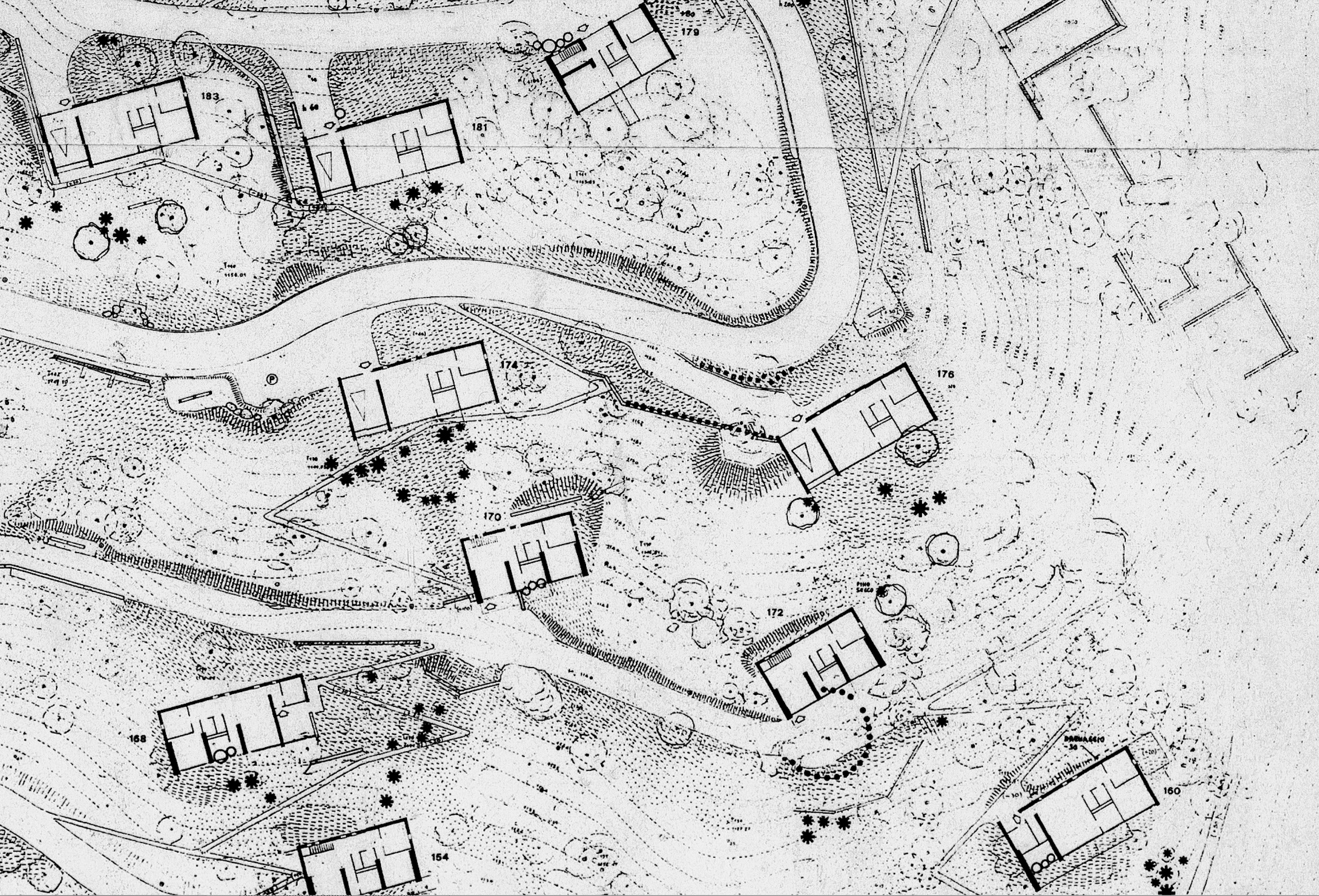
The village of Corte di Cadore created by Edoardo Gellner in the 1950s is the result of different phases in which thinking and acting were skillfully alternated to create a series of landscapes and ever-changing balances between architecture and nature.
In the first phase, the natural element was meant to cooperate with the built element, connecting it to the surrounding natural scenery, thus generating a new “built landscape”; however, the vegetation grew lusher than expected, threatening to compromise the visual relationship conceived by the architect. In the wake of these sudden changes, the architect began to interpret the new landscape as an element to be enhanced and designed to limit its effects on architecture while maintaining its anarchist proliferation. The landscape project for the controlled felling of parts of vegetation had soon to be adapted to the change of management of the site, according to a forest planning approach that often does not take architectural issues into account. The recent events of the Vaia storm and the bark beetle infestation seem to indicate Nature’s desire to regain control and create its own image.







